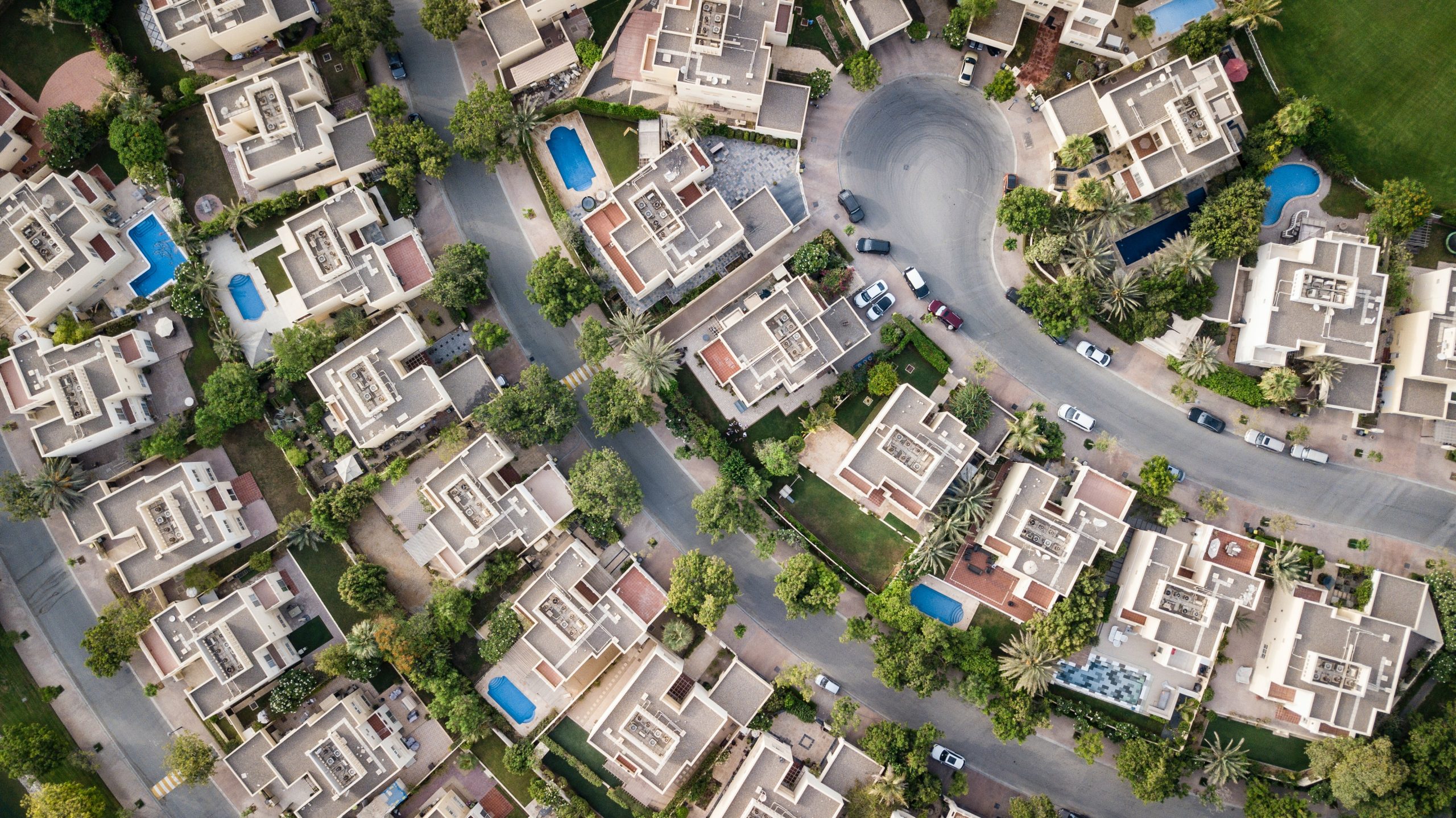Homeowners Associations, commonly known as HOAs, have established a significant presence in the landscape of American housing. As of 2021, according to the U.S. National and State Statistical Review for Community Association Data, an estimated 74.2 million Americans live within an HOA governed community. These numbers reflect a growing trend towards community living that is characterized by shared spaces, services, and a common set of rules and regulations.
But what does living in an HOA community truly entail? On the surface, it can seem like the perfect blend of private homeownership and communal living. In essence, HOA communities aim to offer homeowners a high standard of living, often providing access to well-maintained amenities, ensuring a consistent and appealing neighborhood aesthetic, and handling conflict resolution among neighbors. However, this structure also introduces additional layers of cost, rules, and potential complications.
The decision to buy a home within an HOA community comes with a unique set of pros and cons, which can significantly impact your lifestyle and living experience. This decision warrants careful consideration and understanding. Will you appreciate the meticulously maintained landscapes and the shared pool or gym, or will you find the HOA fees burdensome and the regulations overly restrictive?
This article aims to explore both the upsides and downsides of living within an HOA community. We will delve into the advantages, which include but are not limited to a uniform community appearance, access to amenities, and a structured system for dispute resolution. We’ll also dissect the challenges, such as the potential for significant fees, restrictive rules, and the risk of poor management.
While there’s no one-size-fits-all answer to whether HOA living is the right choice, gaining a comprehensive understanding of what it involves can help potential homeowners make informed decisions that best align with their lifestyle preferences, financial capabilities, and long-term goals.
The Upside of HOA Living: A Deeper Look
When contemplating a move to an HOA-governed community, it’s crucial to understand the various advantages that can make these neighborhoods attractive and appealing. Let’s delve deeper into the benefits of residing in an HOA community, which range from enhanced community appearance to convenient services and amenities, and structured conflict resolution.
Maintained Community Appearance
HOA communities are often praised for their well-kept aesthetics and uniformity. The beauty of the community is one of the key benefits that homeowners associations bring to the table. HOAs are vested with the authority to ensure that the community maintains a specific standard, which typically involves establishing guidelines for the exterior appearance of homes.
These guidelines might govern everything from the color palette you can use on your home to the type of fencing, landscaping, and even holiday decorations permitted. By maintaining a certain level of uniformity, HOAs help to foster a cohesive and attractive neighborhood appearance.
This meticulous attention to aesthetics does more than just ensure a pleasant environment, and it can directly contribute to maintaining or even enhancing property values within the community. In a well-maintained HOA community, you’re less likely to see neglected yards, peeling paint, or dilapidated structures. This kind of attention to detail can be beneficial when it comes time to sell your home, as buyers are often attracted to well-maintained and visually appealing neighborhoods.
Access to Amenities and Services
One of the most compelling aspects of living in an HOA community is the access to shared amenities and services. These can significantly enhance your quality of life and provide convenience right within your neighborhood.
Many HOA communities feature amenities such as swimming pools, tennis courts, playgrounds, fitness centers, and even golf courses. For families with children or active adults, these amenities provide a convenient, safe, and often cost-effective way to enjoy recreational activities without needing to travel far from home.
The services provided by an HOA community can also add a level of convenience to homeowners’ lives. From landscaping and snow removal to trash collection and community maintenance, these services can save homeowners time and effort. Instead of spending weekends mowing the lawn or shoveling snow, you can relax and enjoy the comfort of your home and the beauty of your community.
Structured Conflict Resolution
Living in close proximity to others can inevitably lead to disagreements or disputes. One of the benefits of an HOA community is the structured process for addressing and resolving these conflicts.
Whether it’s a boundary dispute, a noise complaint, or a disagreement over shared amenities, the HOA provides a clear pathway for addressing these issues. This process often starts with a written complaint, followed by investigation and mediation by the HOA board or a designated committee. By providing this service, the HOA can help to maintain a peaceful community and prevent small issues from escalating into bigger problems.
In conclusion, the upsides of HOA living can significantly contribute to a high quality of life. The maintained community appearance can protect your investment, access to amenities and services can enhance your daily life, and the presence of structured conflict resolution can keep the peace within your community. But as with any decision, understanding the potential downsides is equally important.
The Drawbacks of HOA Living: A Closer Look
Just as there are appealing upsides to living in a Homeowners Association community, there are also some potential drawbacks to consider. It’s crucial to fully understand these challenges, which range from regular fees and assessments, to rules and restrictions that some may find limiting, and the possibility of poor management.
Fees and Assessments
One of the most immediate challenges of living in an HOA community is the cost. HOAs require monthly or annual dues from homeowners to fund the various services and amenities provided by the association. The amount can vary significantly depending on the community, the size of your property, and the amenities offered.
For some, this ongoing cost might be considered a wise investment in the value of their property and the quality of their community. However, for others, especially those on tight budgets, these fees can be a substantial financial burden.
Moreover, on top of regular dues, homeowners in HOA communities can also be subject to special assessments. These assessments are additional fees levied for unexpected or large-scale projects, such as major repairs to shared amenities or sudden increases in property insurance. These costs can be unexpected and substantial, adding to the financial strain.
Rules and Restrictions
Another potential drawback of HOA living is the stringent set of rules and regulations homeowners must abide by. These rules, while designed to maintain harmony and high aesthetic standards, can feel restrictive to some.
HOAs often regulate aspects such as exterior home colors, yard maintenance, parking, pet ownership, and even minor details like the types of window coverings you can use. For some individuals, these rules can feel overly controlling, limiting their ability to express individuality through their homes or enjoy their property as they wish.
Moreover, enforcement of these rules can lead to fines or other penalties, creating potential conflict between homeowners and the HOA board. For those who value personal freedom and the ability to make independent decisions about their property, living within an HOA can prove to be frustrating.
Potential for Mismanagement
Finally, it’s essential to note that the management and operation of an HOA community depend on the HOA board, which is typically made up of volunteers from within the community. While many HOA boards operate effectively and in the best interest of the community, there’s always the potential for poor management.
HOA board members are responsible for managing budgets, enforcing rules, and making critical decisions about community maintenance and improvement. If board members lack the necessary experience or skills, or if they do not effectively communicate with residents, it can lead to financial instability, unresolved conflicts, or neglected maintenance tasks. In some cases, mismanagement can even result in legal battles, which are not only costly but can also cause significant tension within the community.
In Conclusion: Balancing the Pros and Cons of HOA Living
As we’ve explored, life within a Homeowners Association community can offer a multitude of benefits and potential drawbacks. The decision to live in an HOA community is not one to be taken lightly and ultimately depends on individual preferences, lifestyle, and personal tolerance towards rules and fees.
Living in an HOA community can offer an enhanced lifestyle filled with aesthetic appeal, access to shared amenities, and a structured process for resolving disputes. These benefits can create an ideal living situation for those who value a well-maintained neighborhood, convenient access to recreational facilities, and the peace of mind that comes from having a management entity that ensures a harmonious living environment.
On the other hand, the regular fees and special assessments can be a significant financial commitment. The rules and regulations, while maintaining an appealing and orderly community, can feel restrictive for some individuals, possibly limiting personal freedom and creativity. Furthermore, the risk of poor management is another crucial factor to consider, as it can impact both the financial health and the overall harmony of the community.
Making the decision to live within an HOA involves more than just weighing the pros and cons. It requires a deeper understanding of what you value in a living environment, what you are willing to compromise on, and what you consider non-negotiable.
Before moving into an HOA community, potential homeowners should thoroughly review the HOA’s covenants, conditions, and restrictions (CC&Rs), ask about the financial health of the HOA, and perhaps most importantly, try to get a sense of the community culture. Speaking to current residents can provide invaluable insights into what it’s like to live there.
In essence, the decision to live in an HOA community is a personal one that requires careful consideration of individual lifestyle preferences, financial capabilities, and personal ideals. Understanding the full spectrum of pros and cons can help ensure that you make a choice that aligns with your needs and aspirations for your home and community life.









